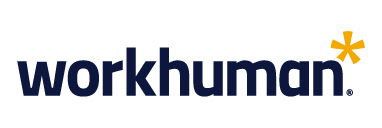How do you use recognition to help employees thrive? Hayley Lewis, managing director at Halo Psychology, Nebel Crowhurst, vice president of people at Into University Partnerships, and Stuart Curtis, senior director of global talent development at Workhuman formed an expert panel to help answer such a question.
Ranging from grand gestures to a simple thank you, the panel showed that employee recognition can come in different shapes and sizes.
Getting recognition right:
What MasterChef Australia has taught me about winner vs loser mentality
SMEs should focus on culture to retain staff
Rise in CEOs linking pay to engagement and diversity targets
A personal touch
The point of showing employees recognition is to make them feel valued and let them know their contributions are appreciated. By rewarding everyone in the same way, this purpose can get lost.
Lewis said it is a manager’s responsibility to find out what works best for the people in their team.
She said: “In terms of recognition, what has more of a positive impact are those managers who don’t just rely on the organisation’s recognition, reward and award approaches, and also those who don’t take a one-size-fits-all approach.
“Not everybody wants to be recognised in the same way, so it’s really incumbent on anybody who manages people to get to know the people that you’re managing, and who are reporting into you and find out what kind of recognition means something to them.”
Crowhurst added that even the smallest gestures can be held in high regard by employees. She said: “The things that really stand out, sometimes, are really small moments when someone can just say ‘thanks’. That thanks can be for the tiny things when you’re having a difficult time, someone notices and says can ‘what can I do to help you’ or ‘thanks for that really great piece of work that you did’.
“No matter what role you do in a business, it’s just really nice when you have that feeling of someone saying thank you for that real ‘in the moment’ appreciation.”
Small gestures, according to Crowhurst, have been amplified during the pandemic. She added: “Especially over the last few years, those moments of appreciation that come from all different directions are what make a difference. People feel cared for and feel like they belong.”
Personal touches can also help the quieter members of a team feel seen. “Investing in recognition also helps people who are highly introverted, and don’t like to talk about themselves,” said Curtis. “A recognition programme allows their peers to call them out and recognise the work they’re doing.”
To be effective though, recognition has to feel genuine, Curtis said.
“It’s got to be authentic. It can’t be generic, it can’t be copy and paste. The impact that has is just incredible in somebody’s life,” he said.
“People who are recognised frequently are 70% more likely to report thriving in the rest of their life because it gives them an incredible feeling. They’re five times more likely to connect it to the culture of your organisation.”
When polled, 30% of the webinar audience said the main way they were recognised by their company was through peer-to-peer recognition on platforms such as Slack and Microsoft Teams. The majority (42%) said they received it through private one-to-ones.
Employee input
However, Lewis adds that any discussions around recognition only make sense if they include all employees involved.
She said: “It’s about engaging with staff and having a conversation with them about what can make them feel good about the work they do, and about the impact they have. What may be their previous experiences of recognition? What does recognition mean to them?”
Collaboration between staff and employers will make the process of introducing recognition programmes much smoother, Crowhurst added. She said: “When you go out and you really listen to people, there’ll be certain trends or themes that come through.
“HR’s role is to act as a guide so that you can help to shape and create the framework for something which is informed by listening to the business and listening to people in the business. However, the context of each organisation will be different.”
While it might take time to establish which office milestones get celebrated, Curtis said that having a firm recognition plan in place will help speed things along.
He said: “General milestones that we place emphasis on – such as when you join the organisation, your three-year or five-year milestones, recognising a birth – are ingrained in a culture over a long period of time, so you’re not going to get there immediately.
“Build this into a plan, work with a customer success organisation of whoever is doing your recognition programmes.”
Raising awareness
There’s no point discussing the best way to recognise employees if the company has no recognition programme in place whatsoever.
When polled, 57% of the webinar audience said their organisation had no formal recognition programme in place for employees.
Lewis said that even if HR teams work hard to set up these programmes, it might not always reach the intended audience.
“I’d like to think, from an HR point of view, everyone is aware of the programmes that you have in place,” she said. “The likelihood is there’s a proportion of people that don’t, or there’s a proportion of people, and quite likely managers, that aren’t leveraging it to its best advantage.
“You can’t pat yourself on the back for putting such mechanisms in place and then not drive awareness.”
Programmes can often get lost among other corporate initiatives, Lewis added: “Particularly in larger organisations, where there’s a lot going on, there are a lot of programmes and initiatives, sometimes it can be really hard to kind of keep up.”
Curtis said it was unsurprising that employees were unaware of the existence of any recognition programmes, given that some organisations struggle to make them a priority.
“The latest research that we have shows 80% of business leaders haven’t got having a recognition programme in place as a strategic priority. A lot of organisations don’t have a budget set aside for recognition either.”
Having a good and consistent recognition programme, Curtis added, is a vital retention tool that saves businesses money going forward.
“An awful lot of people get their annual bonus and then exit the organisation. They’ll hang on for that and then leave, as opposed to a constant recognition flow, in which you’re more likely to be engaged.
“The feeling lasts for weeks, and when you get that on a regular basis, you’re more likely to stay. The cost of replacing somebody could be as much as 18 months to two years of their salary in replacement costs.”
Catch this webinar on demand here.
This article first appeared in the September/October 2022 print issue. Subscribe today to have all our latest articles delivered right to your desk.










